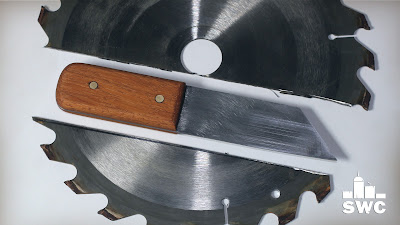Tools and materials I propose:
In this video I make a really small wooden slingshot out of a scrap piece of beech. It uses a rubber band and it can fit on most classic wooden pencils.
I begun by turning my stock true with a roughing gouge.
I then flattened the front with a spindle gouge.
To hollow the front I drilled my depth hole. Then I used the spindle gouge and I finished with a small side scrapper.
I then used a spindle gouge and a skew to finish shaping.
I added three burned marks using my wire burning tool.
I divided my piece in half and drilled the holes for the rubber band.
I parted the piece off the lathe.
I found the centre on the bottom and drilled a hole to fit a regular pencil.
I used a disc sanding adapter from my angle grinder, to sand the excess wood.
I finished my slingshot using mineral oil.
I added a rubber band and made some ammo out of a piece of wire.
And my little slingshot was ready. Please don’t shoot at people or animals. I am really happy with the way it came out. But that was it, see you soon with a new project video.
Disclosure: Some of the links below are affiliate links, meaning, that at no cost to you, I get a small commission if you click through and make a purchase.

















